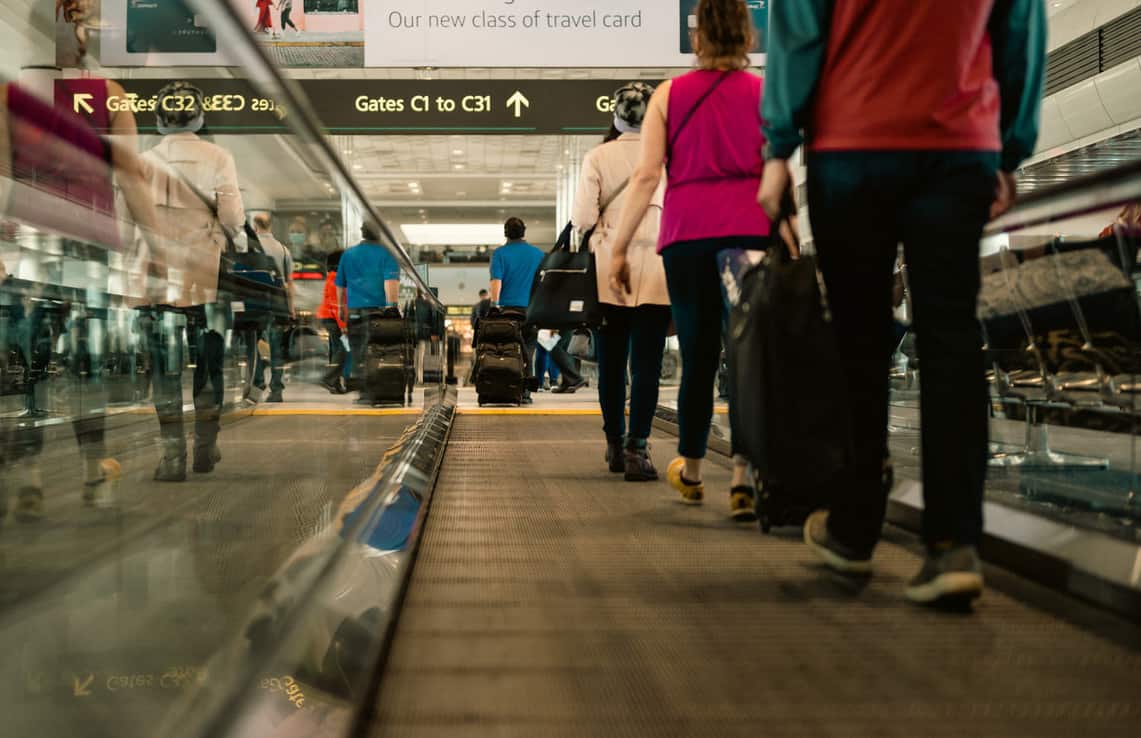Wait times for travellers to be reduced at Pearson Airport in Mississauga
Published May 28, 2022 at 8:09 am

One thing we know is since the borders have opened up for travel it has been a huge struggle at Pearson Airport in Mississauga to keep pace with the amount of people coming and going.
At least the government of Canada recognized that there is an issue and they are taking steps to help passengers get moving faster.
Omar Alghabra, Minister of Transport, and the Honourable Marco Mendicino, Minister of Public Safety, issued this statement on May 27 to provide an update on actions the government is taking to reduce wait times at Canadian airports:
They mentioned these points to be the specific action to be taken in response to the airport delays:
- Transport Canada (TC) quickly convened government agencies and industry including the Public Health Agency of Canada (PHAC), the Canada Border Services Agency (CBSA) and the Canadian Air Transport Security Authority (CATSA), creating an outbound screening committee to address bottlenecks occurring at pre-board security screening and pre-clearance departure checkpoints and to develop new approaches to dealing with these pressure points in the travel system.
- CATSA has been working with its contractors to increase the number of screening officers at passenger screening checkpoints. Currently, there are approximately 400 additional screening officers in different phases of their training across the country who will be deployed between now and the end of June.
- With TC’s support, these recruits will benefit from progressing more quickly through a more flexible onboarding process so they can be on the ground as quickly as possible. Airports are working to support CATSA with this initiative.
- CATSA is very close to having recruited 100% of their target numbers of screening officers for the summer in many airports, including Toronto Pearson International Airport and Vancouver International Airport.
- CATSA has accelerated the use of pre-certified screening officers to carry out non-screening functions, to optimize resources, and to allow certified screening officers to focus their efforts on key security functions.
- Airports, airlines, and other partners are communicating with CATSA daily to help them adjust scheduling to ensure screeners are available where and when they are needed to support busy travel times as air travel quickly recovers.
- CATSA is currently studying best practices at airports to see where these processes can be applied to other airports to gain efficiencies.
They also mention that while more remains to be done, these efforts are paying off through declining wait times for screening. Since the beginning of the month, the number of passengers waiting 30 minutes and more for outbound screening at our largest airports (Toronto Pearson International, Vancouver International, Montreal Trudeau International and Calgary International), has been halved across all four airports.
For arriving passengers, the Government of Canada, including TC, PHAC and Public Safety Canada, continues to work with airlines and industry partners to reduce delays, including with planes holding at the gates at Toronto Pearson International Airport.
- CBSA and the Toronto Pearson International Airport are taking action by adding 25 kiosks to speed up processing time. CBSA is also initiating the Summer Action Plan to ensure efficiency; increasing available officer capacity; and easing the return of Student Border Services Officers.
- PHAC is working with CBSA and partners to streamline their operations. For example, they will be removing the requirement for Mandatory Random Testing on the International to Domestic Connections Process. Other changes to streamline processing on public health grounds are being developed.
Airports, airlines and the Government of Canada, including CATSA, PHAC, TC and the CBSA, are improving communications with travellers so passengers can better anticipate pre-boarding screening and arrival processing requirements, facilitating a smoother passage in and out of airports.
There are things travellers can do to help speed up the processes:
- Travellers arriving at Toronto Pearson International Airport and Vancouver International Airport can use the Advanced CBSA Declaration on the web version of ArriveCAN to make their customs and immigration declaration up to 72 hours in advance of flying into Canada. This will save travellers time when they arrive at the airport. This feature will be integrated into the ArriveCAN mobile app this summer and will also be made available at other airports across Canada in the coming months.
- All travellers arriving from international destinations must complete their information in ArriveCan. Travellers who arrive in Canada without having completed ArriveCAN contribute significantly to border congestion. Regardless of vaccination status, a traveller who arrives without an ArriveCAN receipt is considered an unvaccinated traveller, meaning they have to test upon arrival and Day 8 and quarantine for 14 days. Travellers without an ArriveCAN receipt may also be subject to enforcement, including a fine of $5,000. The simplest thing travellers can do to speed up their airport experience is to come prepared, including completing ArriveCAN.
- Travellers 16 years old or older can use new eGates at Toronto Pearson International Airport to verify their identity and submit their customs and immigration declaration, which will improve the traffic flow at the Terminal 1 arrival hall and speed up processing.
